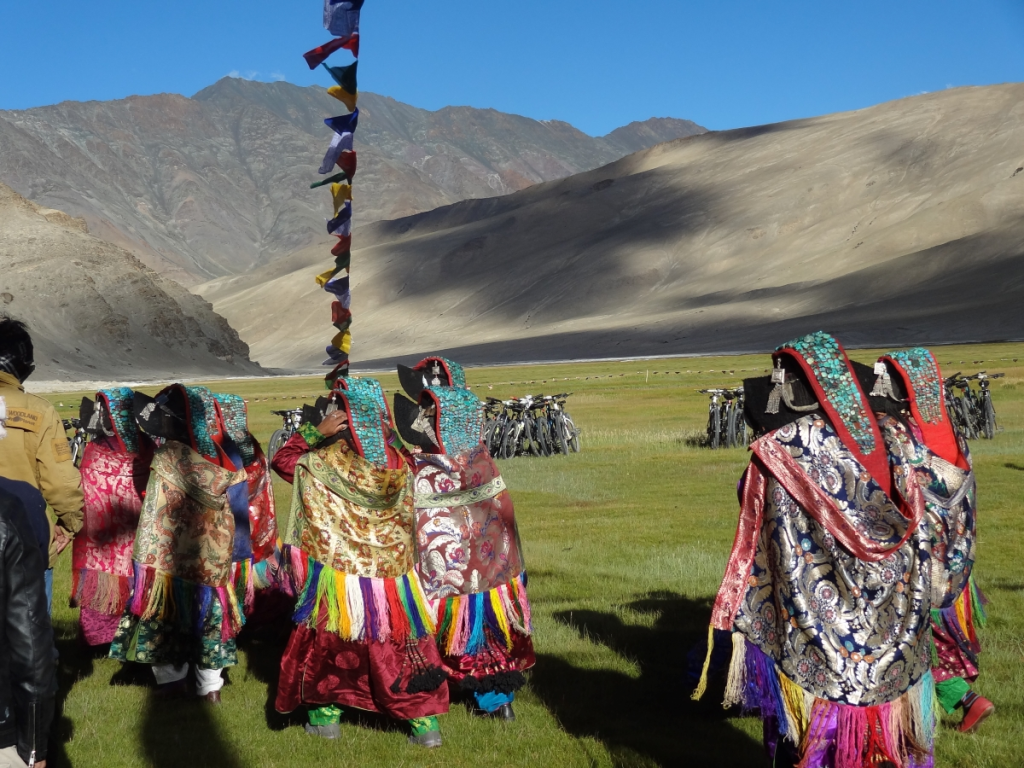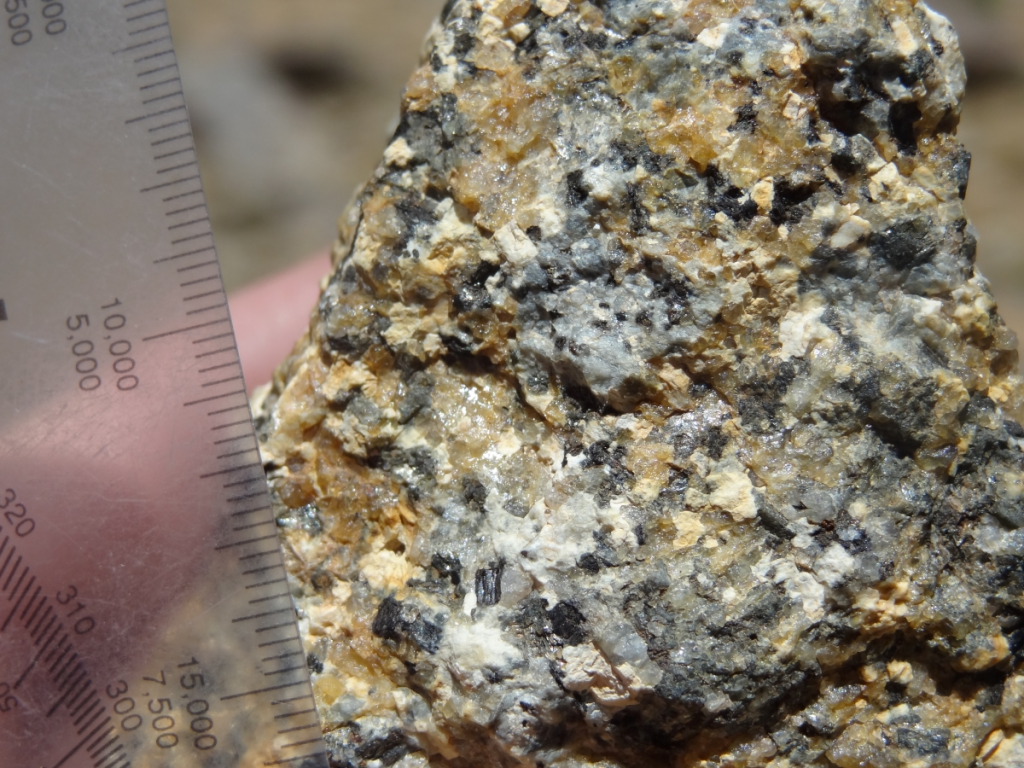A mountain under a microscope

Tibetan prayer flags marking the top of a pass on a trekking route from Tso Kar to Karzok. The pack horses belong to a local Tibetan guide assisting me in my fieldwork.
By (opens in a new window)Dr Anna Bidgood, postdoctoral researcher in the School of Earth Sciences at UCD.
As a geologist, I often get asked the question of “what do you actually do? Rocks right?”. Only some geologists spend their time looking at rocks, others study early life, atmospheres, oceans, other planets. I, however, am a geologist who does in fact spend their time looking at rocks. But what is it about rocks that fascinates me? Well, it’s the millions of years of history that are hidden inside, waiting for its biography to be written.
I recently spent three months walking around the Indian Himalayas with boots on my feet, rocks in my backpack, a hammer in my belt and a Tibetan yak herder and his ponies for company. The Himalayas is the largest active mountain belt in the world and I was there to uncover what happened to Indian when it first collided with Asia, 60 million years ago, an event which resulted in the formation of a mountain belt.

Tso Morari lake in Ladakh, Indian Himalaya, at an altitude of 4500 m.
Mountains are enormously important earth systems. The Himalayan mountains is the catchment areas that feeds huge rivers such as the Ganges, the pillar and curse of Bangladesh. The mountains are home to animals that have long since adapted to its harsh conditions, such as the beautiful snow leopard, as well as the bar headed goose, whose migration route takes in the high altitude peaks of the Himalayas. The uplift of the Himalayas also had a profound effect on weather systems as the topographic barrier of the Himalayas strengthens the South Asian Monsoon.
With all of this interconnection, you can imagine that the uplift and erosion of mountain belts over time had a profound effect on weather systems, climate, species migration and evolution, as well as the rock record beneath the surface of the Earth. In order to understand this connection we need to know when and how mountains were made. When I pick up a rock in the Himalayas, I ask myself questions such as “where was this rock before it got caught up in this crumple zone? Was it at the bottom of the ocean or in a dry desert? How long was is there before India collided with Asia? What path did it take from there and how long did it take to get where it is now? Did the rock break or did it flow, like putty? It is truly incredible the story that you can tease out of a single rock.

Ladakhi women wearing headdresses adorned with turquoise at a Buddhist festival. The bikes in the background belong to the 200 Buddhist nuns on a pilgrimage from Kathmandu to Leh.
So how do we unpick the rock record to figure out what happened in the past? Imagine a rock as like a sentence, they are made up of words [minerals] which are made up of letters [elements]. The order that the letters are arranged is important and conveys a meaning. The construction of the words in the sentence can also change the message being delivered. We can read rocks in a similar way, by looking at the combination of minerals that have grown in a rock and the elements that make up these minerals.

[meta] granite rock sample that preserves a 450 million year history from cooling and crystallisation to subduction 100 km beneath the surface of the earth.
A particularly astounding example comes from a granite that started its life as a magma 460 million years ago. Over the course of the next 450 million years this magma cooled and crystallised into a rock, before it was flushed through with hot fluids, then pulled (subducted) into the Earth to 100 km beneath the surface of the Earth. This wasn’t the end of the story as this rock then returned towards the surface of the Earth in less than 2 million years (very fast in geological terms!), where it then slowly made its way back to the surface by erosion of the overlying rock. This entire story is preserved in the minerals that grew during this long history and can be teased out of a tiny slither of rock – a mountain under a microscope.
So next time someone asks me what I do, I may just tell them this story.